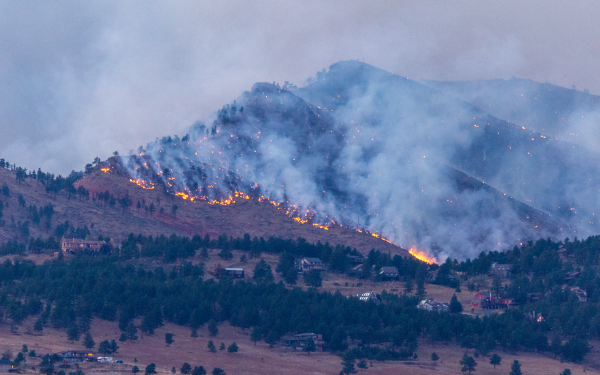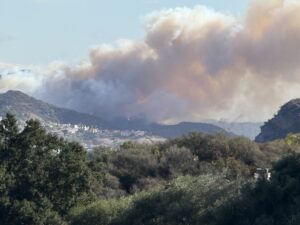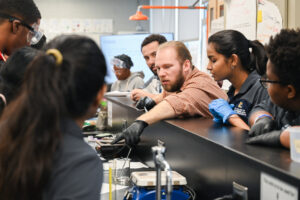CIRI Research Aims to Identify Climate‑Related Health Risks

Climate change drives more extreme weather events and threatens human health and well-being. As the effects of climate change intensify, the places where people live, learn, work and play may be impacted by significant weather-related events.
The Chemical Insights Research Institute (CIRI) is researching health risks associated with climate-related chemical pollution exposure and emissions from fires in areas where human development and undeveloped wildland meet, known as the wildland-urban interface (WUI). CIRI seeks to close scientific research gaps and develop strategies to reduce these human health risks in human-made or built environments and help create more resilient communities.
“CIRI’s research targets these developing threats to protect human health and help create more resilient communities,” said Dr. Marilyn Black, vice president and senior technical advisor for CIRI. “We’re addressing some of the most critical pollutant exposure challenges that can lead to improved practices and product design for the reduction of human exposure risks.”
Some of that exposure occurs indoors, where manufactured wood, paint, adhesives, insulation, drywall, and other materials used to construct and furnish buildings expose people to chemicals that may lead to cognitive, reproductive, or carcinogenic effects.
Studying how climate change affects indoor chemical emissions
CIRI is evaluating how today’s higher temperatures and increased moisture in the indoor environment affect the level of chemical emissions and human exposure. For example, volatile organic compound (VOC) emissions from typical wood flooring increase by more than 400% when temperatures rise from 75 degrees Fahrenheit to 95 degrees Fahrenheit. With the stress of extreme heat on power grids and the lack of cooling systems in many homes, people are likely to face increased chemical exposure that may affect their health.
Using its unique exposure chambers, measurement techniques, and toxicological tools, CIRI is determining what these toxic exposures might be. Precise pollutant measurements focus on fine particulate matter, metals like lead and chromium, and halogenated organics that lead to atmospheric chemical transformations and exposure gases. All these pollutants can be directly linked to respiratory and cardiovascular disease, cancers, and premature death.
Studying how climate change affects outdoor chemical emissions
Climate change-related drought also exacerbates wildfires, a major source of air pollutants such as VOCs and particulate matter that can significantly reduce air quality.
Of particular concern are wildfires in the WUI, which is the fastest-growing land use type in the continental United States. WUI fires generate a unique fuel mixture of synthetic chemical and metal content from urban materials with wildland fuel. These emissions, which can affect our air, water, and residues in our environment, pose health risks to both occupants and firefighters.
CIRI is working to mitigate those risks and support building resiliency by evaluating the chemical and particle contamination of homes during wildfires and linking the contamination to community health outcomes.
Revolutionizing Safety Through Science
At UL Research Institutes, we tackle tough issues with a scientific rigor trusted throughout the world.
PUBLISHED









